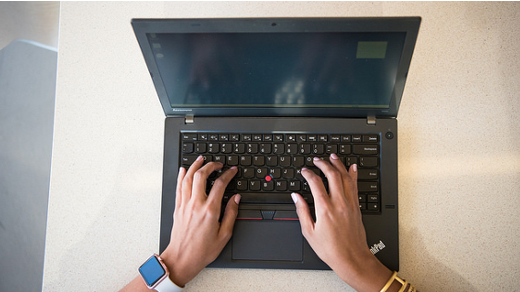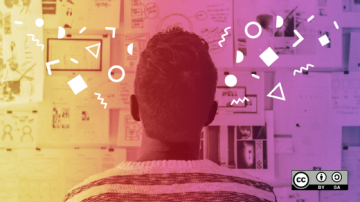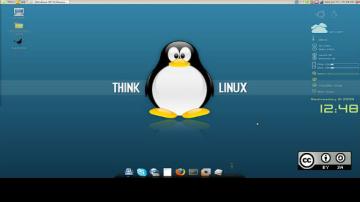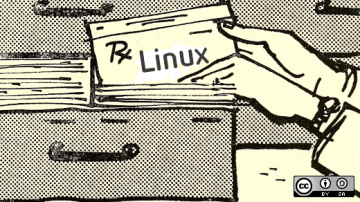I have been a huge Mac fan and power user since I started in IT in 2004. But a few months ago—for several reasons—I made the commitment to shift to Linux as my daily driver. This isn't my first attempt at fully adopting Linux, but I'm finding it easier than ever. Here is what inspired me to switch.
My first attempt at Linux on the desktop
I remember looking up at the projector, and it looking back at me. Neither of us understood why it wouldn't display. VGA cords were fully seated with no bent pins to be found. I tapped every key combination I could think of to signal my laptop that it's time to get over the stage fright.
I ran Linux in college as an experiment. My manager in the IT department was an advocate for the many flavors out there, and as I grew more confident in desktop support and writing scripts, I wanted to learn more about it. IT was far more interesting to me than my computer science degree program, which felt so abstract and theoretical—"who cares about binary search trees?" I thought—while our sysadmin team's work felt so tangible.
This story ends with me logging into a Windows workstation to get through my presentation for class, and marks the end of my first attempt at Linux as my day-to-day OS. I admired its flexibility, but compatibility was lacking. I would occasionally write a script that SSHed into a box to run another script, but I stopped using Linux on a day-to-day basis.
A fresh look at Linux compatibility
When I decided to give Linux another go a few months ago, I expected more of the same compatibility nightmare, but I couldn't be more wrong.
Right after the installation process completed, I plugged in a USB-C hub to see what I'd gotten myself into. Everything worked immediately. The HDMI-connected extra-wide monitor popped up as a mirrored display to my laptop screen, and I easily adjusted it to be a second monitor. The USB-connected webcam, which is essential to my work-from-home life, showed up as a video with no trouble at all. Even my Mac charger, which was already plugged into the hub since I've been using a Mac, started to charge my very-not-Mac hardware.
My positive experience was probably related to some updates to USB-C, which received some needed attention in 2018 to compete with other OS experiences. As Phoronix explained:
"The USB Type-C interface offers an 'Alternate Mode' extension for non-USB signaling and the biggest user of this alternate mode in the specification is allowing DisplayPort support. Besides DP, another alternate mode is the Thunderbolt 3 support. The DisplayPort Alt Mode supports 4K and even 8Kx4K video output, including multi-channel audio.
"While USB-C alternate modes and DisplayPort have been around for a while now and is common in the Windows space, the mainline Linux kernel hasn't supported this functionality. Fortunately, thanks to Intel, that is now changing."
Thinking beyond ports, a quick scroll through the Linux on Laptops hardware options shows a much more complete set of choices than I experienced in the early 2000s.
This has been a night-and-day difference from my first attempt at Linux adoption, and it's one I welcome with open arms.
Breaking out of Apple's walled garden
Using Linux has added new friction to my daily workflow, and I love that it has.
My Mac workflow was seamless: hop on an iPad in the morning, write down some thoughts on what my day will look like, and start to read some articles in Safari; slide over my iPhone to continue reading; then log into my MacBook where years of fine-tuning have worked out how all these pieces connect. Keyboard shortcuts are built into my brain; user experiences are as they've mostly always been. It's wildly comfortable.
That comfort comes with a cost. I largely forgot how my environment functions, and I couldn't answer questions I wanted to answer. Did I customize some PLIST files to get that custom shortcut, or did I remember to check it into my dotfiles? How did I get so dependent on Safari and Chrome when Firefox has a much better mission? Or why, specifically, won't I use an Android-based phone instead of my i-things?
On that note, I've often thought about shifting to an Android-based phone, but I would lose the connection I have across all these devices and the little conveniences designed into the ecosystem. For instance, I wouldn't be able to type in searches from my iPhone for the Apple TV or share a password with AirDrop with my other Apple-based friends. Those features are great benefits of homogeneous device environments, and it is remarkable engineering. That said, these conveniences come at a cost of feeling trapped by the ecosystem.
I love being curious about how devices work. I want to be able to explain environmental configurations that make it fun or easy to use my systems, but I also want to see what adding some friction does for my perspective. To paraphrase Marcel Proust, "The real voyage of discovery consists not in seeking new lands but seeing with new eyes." My use of technology has been so convenient that I stopped being curious about how it all works. Linux gives me an opportunity to see with new eyes again.
Inspired by you
All of the above is reason enough to explore Linux, but I have also been inspired by you. While all operating systems are welcome in the open source community, Opensource.com writers' and readers' joy for Linux is infectious. It inspired me to dive back in, and I'm enjoying the journey.










22 Comments